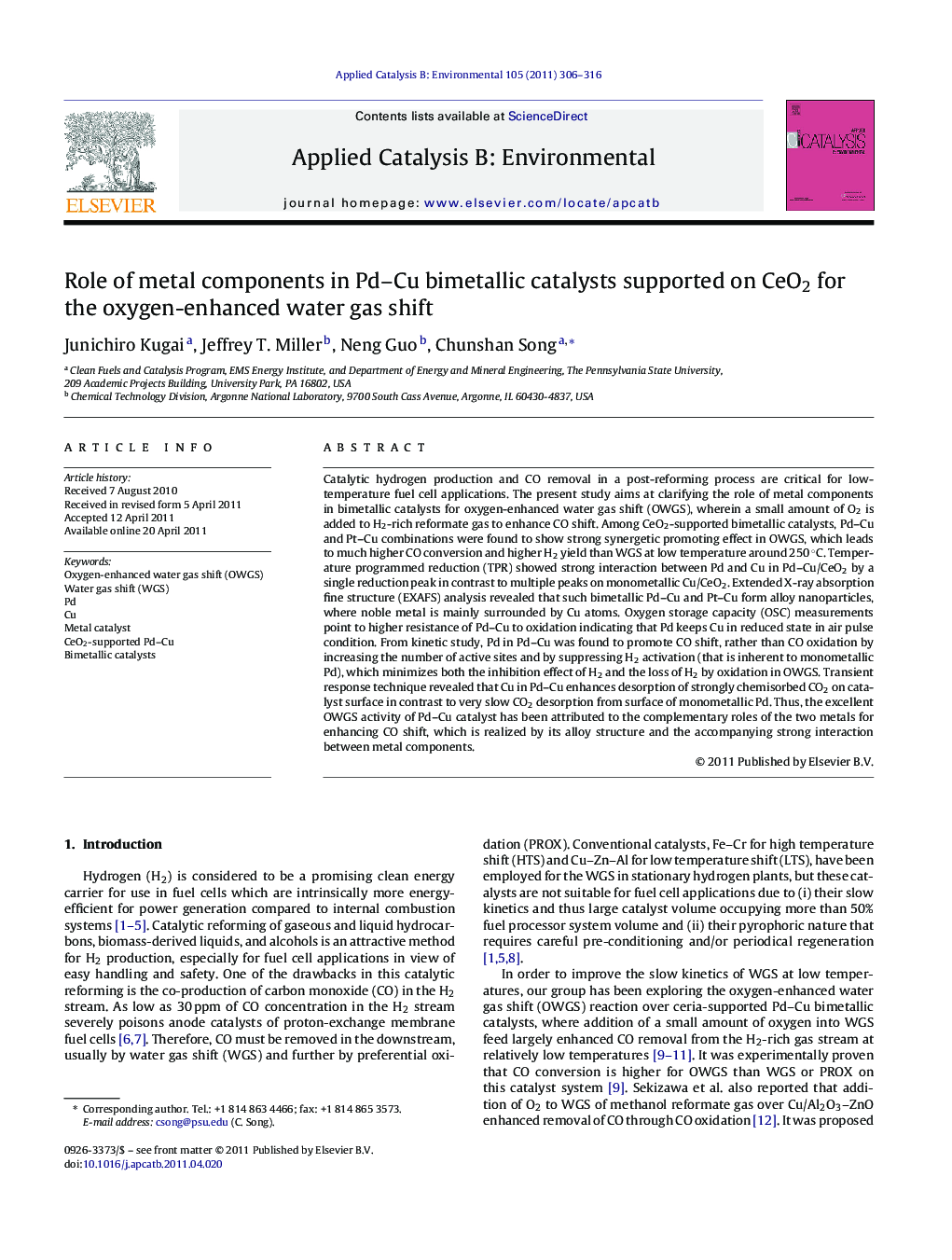| کد مقاله | کد نشریه | سال انتشار | مقاله انگلیسی | نسخه تمام متن |
|---|---|---|---|---|
| 46750 | 46447 | 2011 | 11 صفحه PDF | دانلود رایگان |

Catalytic hydrogen production and CO removal in a post-reforming process are critical for low-temperature fuel cell applications. The present study aims at clarifying the role of metal components in bimetallic catalysts for oxygen-enhanced water gas shift (OWGS), wherein a small amount of O2 is added to H2-rich reformate gas to enhance CO shift. Among CeO2-supported bimetallic catalysts, Pd–Cu and Pt–Cu combinations were found to show strong synergetic promoting effect in OWGS, which leads to much higher CO conversion and higher H2 yield than WGS at low temperature around 250 °C. Temperature programmed reduction (TPR) showed strong interaction between Pd and Cu in Pd–Cu/CeO2 by a single reduction peak in contrast to multiple peaks on monometallic Cu/CeO2. Extended X-ray absorption fine structure (EXAFS) analysis revealed that such bimetallic Pd–Cu and Pt–Cu form alloy nanoparticles, where noble metal is mainly surrounded by Cu atoms. Oxygen storage capacity (OSC) measurements point to higher resistance of Pd–Cu to oxidation indicating that Pd keeps Cu in reduced state in air pulse condition. From kinetic study, Pd in Pd–Cu was found to promote CO shift, rather than CO oxidation by increasing the number of active sites and by suppressing H2 activation (that is inherent to monometallic Pd), which minimizes both the inhibition effect of H2 and the loss of H2 by oxidation in OWGS. Transient response technique revealed that Cu in Pd–Cu enhances desorption of strongly chemisorbed CO2 on catalyst surface in contrast to very slow CO2 desorption from surface of monometallic Pd. Thus, the excellent OWGS activity of Pd–Cu catalyst has been attributed to the complementary roles of the two metals for enhancing CO shift, which is realized by its alloy structure and the accompanying strong interaction between metal components.
Figure optionsDownload as PowerPoint slideHighlights
► Oxygen-enhanced water gas shift (OWGS) is more effective than WGS.
► Among various bimetallic catalysts, Pd–Cu on CeO2 showed uniquely high activity.
► H2 production over Pd–Cu is enhanced more by increasing Pd loading.
► Cu in Pd–Cu suppresses H2 oxidation in OWGS and facilitates CO2 desorption.
► Pd and Cu form alloy on CeO2 and act in concert to promote CO shift with H2O.
Journal: Applied Catalysis B: Environmental - Volume 105, Issues 3–4, 22 June 2011, Pages 306–316